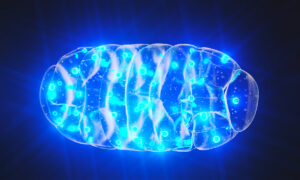Many young kids put nonfood items in their mouths at one time or another. They’re naturally curious about their environment and might, for instance, eat some dirt out of the sandbox. Kids with pica, however, go beyond this innocent exploration of their surroundings.
About Pica
The word pica comes from the Latin word for magpie, a bird known for its large and indiscriminate appetite.
Pica is most common in people with developmental disabilities, like autism and intellectual disabilities, and in children between the ages of 2 and 3. Pica also may surface in children who’ve had a brain injury affecting their development. It can also be a problem for some pregnant women, as well as people with epilepsy.
People with pica frequently crave and eat nonfood items such as:
- dirt
- clay
- paint chips
- plaster
- chalk
- cornstarch
- laundry starch
- baking soda
- coffee grounds
- cigarette ashes
- burnt match heads
- cigarette butts
- feces
- ice
- glue
- hair
- buttons
- paper
- sand
- toothpaste
- soap
Pica is an eating disorder that can result in serious health problems, such as lead poisoning and iron-deficiency anemia.
Signs of Pica
Warning signs that a child may have pica include:
- eating of nonfood items, despite efforts to restrict it, for a period of at least 1 month or longer
- the behavior is considered inappropriate for your child’s age or developmental stage
- the behavior is not part of a cultural, ethnic, or religious practice
Why Do Some People Eat Nonfood Items?
The specific causes of pica are unknown, but certain conditions and situations can increase a person’s risk:
- nutritional deficiencies, such as iron or zinc, that may trigger specific cravings (however, the nonfood items craved usually don’t supply the minerals lacking in the person’s body)
- dieting — people who diet may attempt to ease hunger by eating nonfood substances to get a feeling of fullness
- malnutrition, especially in developing countries, where people with pica most commonly eat soil or clay
- cultural factors — in families, religions, or groups in which eating nonfood substances is a learned practice
- parental neglect, lack of supervision, or food deprivation — often seen in children living in poverty
- developmental problems, such as autism, other developmental disabilities, or brain abnormalities
- mental health conditions, such as obsessive-compulsive disorder (OCD) and schizophrenia
- pregnancy, but it’s been suggested that pica during pregnancy occurs more frequently in women who exhibited similar practices during their childhood or before pregnancy or who have a history of pica in their family
Eating earth substances such as clay or dirt is a form of pica known as geophagia, which can cause iron deficiency. One theory to explain geophagia is that in some cultures, eating clay or dirt is believed to help relieve nausea (and therefore, morning sickness), control diarrhea, increase salivation, remove toxins, and alter odor or taste perception.
Some people claim to enjoy the taste and texture of dirt or clay or other non-food item, and eat it as part of a daily habit (much like smoking is a daily routine for others). Pica may also be a behavioral response to stress.
Another explanation is that pica is a cultural feature of certain religious rituals, folk medicine, and magical beliefs. For example, some people in various cultures believe that eating dirt will help them incorporate magical spirits into their bodies.
None of these theories, though, explains every form of pica. A doctor must treat each case individually to try to understand what’s causing the condition.
When to Call the Doctor
If your child is at risk for pica, talk to your doctor. If your child has consumed a harmful substance, seek medical care immediately. If you think your child has ingested something poisonous, call Poison Control at (800) 222-1222.
A child who continues to consume nonfood items may be at risk for serious health problems, including:
- lead poisoning (from eating lead-based paint chips or dirt contaminated with lead)
- constipation or diarrhea (from consuming indigestible substances like hair, cloth, etc.)
- intestinal obstruction or perforation (from eating objects that could block or injure the intestines)
- tooth or mouth injuries (from eating hard substances that could harm the teeth)
- parasitic and other infections (from eating dirt, feces, or other infected substances)
Medical emergencies and death can occur if the craved substance is toxic or contaminated with lead or mercury, or if the item forms an indigestible mass blocking the intestines. Pica involving lead-containing substances during pregnancy may be associated with an increase in both maternal and fetal lead levels.
What Will the Doctor Do?
Your doctor will play an important role in helping you manage and prevent pica-related behaviors, educating you on teaching your child about acceptable and unacceptable food substances. The doctor will also work with you on ways to to restrict the nonfood items your child craves (i.e., using child-safety locks and high shelving, and keeping household chemicals and medications out of reach).
Some kids require behavioral intervention and families may need to work with a psychologist or other mental health professional.
Medication may also be prescribed if pica is associated with significant behavioral problems not responding to behavioral treatments.
Your doctor may check for anemia or other nutritional deficiencies. A child who has ingested a potentially harmful substance, such as lead, will be screened for lead and other toxic substances and might undergo stool testing for parasites. In some cases, X-rays or other imaging may be helpful to identify what was eaten or to look for bowel problems, such as an obstruction.
Fortunately, pica usually improves as kids get older. But for individuals with developmental or mental health concerns, pica may continue to be problem. Ongoing treatment and maintaining a safe environment and are key to managing this condition.







